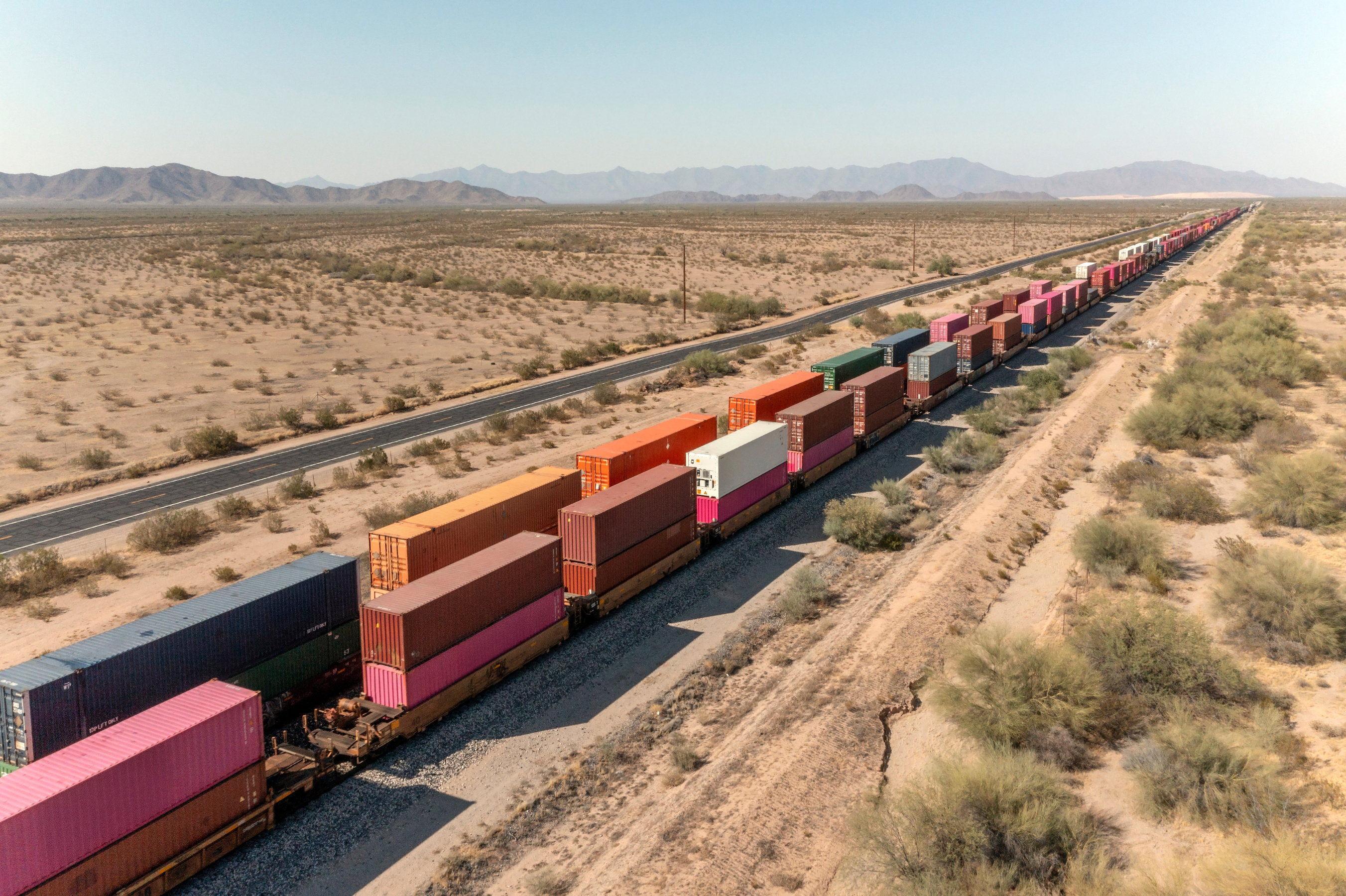7 Strategien zur Reduzierung von Verzögerungen und zur Verbesserung der termingerechten Lieferung

October 10, 2025
October 24, 2025
x min. Lesedauer

Ihre Kühleinheit ist irgendwo in Mittelamerika ausgefallen, und jetzt landen Biologika im Wert von 800.000$ im Müll. Sie überprüfen Ihr Armaturenbrett und stellen fest, dass Ihre Halbleiterlieferung seit Dienstag nicht mehr aktualisiert wurde. Kroger lehnt Produktladungen links und rechts ab, weil Ihre Spediteure immer wieder ihre Lieferfenster verpassen.
Jeder Ops-Manager — egal, ob er versendet temperaturempfindliche Medikamente zu verderbliche Lebensmittel zu hochwertige Elektronik—steht vor demselben Berg, den es zu erklimmen gilt: eine pünktliche Lieferquote von 97% zu erreichen und gleichzeitig mit Spediteuren zusammenzuarbeiten, die verschwinden, Technologien, die Probleme erst erkennen, wenn sie auftreten, und Produkte, die buchstäblich kaputt gehen, wenn sie zu spät kommen oder zu heiß werden.
Der Unterschied zwischen den Teams Erreichung ihrer OTIF-Ziele und wer Geld für Rückbuchungen verschwendet, hängt von der erfolgreichen Umsetzung einer Handvoll Strategien ab. Hier stellen wir sieben vor, die Ihnen helfen können, die Nadel zu bewegen.
Strategie 1: Verwenden Sie prädiktive Live-ETAs in jedem Modus
Wenn Ihr Mobilfunkanbieter „Dienstag um 14:00 Uhr“ sagt, meinen sie in Wirklichkeit Dienstag um 18:47 Uhr — nachdem sie den I-95-Pileup, die Hafensicherung von Long Beach oder ein anderes Wettersystem durchschaut haben, das gerade den Mittleren Westen zerstört. Sie haben die Hafenarbeiter bereits eingeplant und abgefertigt Kühllager für 14:00 Uhr, und jetzt haben Sie keine andere Wahl, als sich anzupassen... während sich Ihre Biologika in einem Anhänger aufwärmen.
Vorausschauende Live-ETAs beheben diese Art von Szenarien. Sie nutzen reale Verkehrsmuster, Wetterdaten und Terminalstaus, um Ihnen mitzuteilen, wann die Lkw tatsächlich ankommen. Geben Sie diese in Ihr TMS ein und alles ändert sich: Die Hafenbesatzungen kommen, wenn die Lieferungen eintreffen, ein Kühlhaus öffnet zur richtigen Zeit, und Kunden werden informiert, bevor sie anrufen, um wegen ihrer Insulinbestellung in Panik zu geraten.
Verfolgen Sie die tatsächlichen Ankunftszeiten Ihrer Fluggesellschaften eine Woche lang anhand ihrer Zusagen. Viele Operationsteams stellen fest, dass ihre „zuverlässigen“ Partner regelmäßig Zeitfenster um drei bis sechs Stunden verpassen. Sobald Sie die echten Muster gesehen haben, können Sie sie bei der Planung berücksichtigen.
Strategie 2: Erstellen Sie ein Ausnahmemanagement mit sofortigen Benachrichtigungen (und 24/7-Abdeckung)
Prädiktive ETAs sagen Ihnen, wann Lkws eintreffen, aber sie sagen Ihnen nicht, dass Ihre Kühleinheit gerade um 23:00 Uhr außerhalb von Nashville gestorben ist. Oder dass Ihre Halbleiterlieferung im Wert von 2 Millionen Dollar seit dem Abendessen regungslos an einer Lkw-Haltestelle liegt. Sie werden am Montagmorgen herausfinden, wenn die Ablehnungs-E-Mail eintrifft und Ihre Rate pünktlicher Lieferungen in die Höhe schnellt.
Das Sichtbarkeit der Lieferung in Echtzeit Gap tötet die meisten Teams — wer können 37% ihrer Ladungen während des Transports nicht zuverlässig verfolgen, was bedeutet, dass sich die Probleme über Nacht verschärfen. Deshalb musst du automatische Benachrichtigungen einrichten die in der Sekunde ausgelöst werden, in der Ihre kritischen Schwellenwerte überschritten werden — seien es Temperaturüberschreitungen, Stopps über zwei Stunden, Routenabweichungen oder ETAs, die an Empfangsfenstern vorbeirutschen.
Benachrichtigungen allein werden jedoch nicht alles beheben. Ihre Nachtschicht braucht ein Drehbuch — und die Befugnis zum Handeln. Wer nimmt um 2:00 Uhr morgens den Notruf des Reefers entgegen? Welcher Ersatztransporter kümmert sich um Notarzneimitteleinsätze? Welcher Temperaturwert löst eine sofortige Umleitung aus?
Strategie 3: Optimieren Sie die Netzbetreiberauswahl mithilfe des Verlaufs auf Spurebene
Benachrichtigungen helfen Ihnen, Probleme zu erkennen, aber Die Auswahl der richtigen Spediteure verhindert sie. Ihr Spediteur könnte Ihre Verbindungen von Dallas nach Atlanta festnageln, aber jedes Mal Lieferungen von Phoenix nach Portland vermasseln. Seetransporter getroffen 50-55% Termintreue bis 2024, aber hinter diesem Durchschnitt verbergen sich massive Schwankungen von Spur zu Spur.
Rufen Sie Ihre tatsächlichen Leistungsdaten ab, und die Muster werden offensichtlich. Verfolgen Sie den Prozentsatz der pünktlichen Lieferungen jedes Spediteurs, die Temperaturkontrolle und die Ausnahmeraten für bestimmte Fahrspuren. Der Kühltransporter, der Ihre Südoststrecken überlastet, könnte Ihre Lieferungen im pazifischen Nordwesten falsch abwickeln. Ihr Elektronikspezialist, der hochwertige Fracht nach Chicago schützt, könnte die Hälfte der Ladungen auf dem Weg nach Miami verlieren.
Erstellen Sie Scorecards, die OTD-Raten, ETA-Abweichungen und Ansprüche nach Fahrspur und Fluggesellschaft anzeigen. Ordnen Sie Fracht vierteljährlich neu zu, je nachdem, welche Spediteure wo tatsächlich abwickeln. Geben Sie keine Phoenix-Strecken mehr an Fluggesellschaften weiter, die dort in 40% der Fälle ausfallen. Ordnen Sie die Fluggesellschaften den Fahrspuren zu, auf denen sie durchweg pünktlich liefern.
Strategie 4: Attacke, Verbleib und Inhaftierung mit Terminen und Hafenplanung
Selbst perfekte Spediteure können nicht reparieren, was in Ihren Einrichtungen passiert. Fahrer haben die Haft am 39% ihrer Stopps, stundenlang zu sitzen, während sich Ihre Pharmazeutika aufwärmen und die Lieferfenster verdunsten. Ihr Spediteur ist pünktlich angekommen, steckt aber jetzt hinter drei anderen Lastwagen fest. Die Uhr brennt, während sich Ihre gefrorenen Meeresfrüchte den Temperaturgrenzwerten nähern.
Töte das Chaos mit der Terminplanung. API-basierte Systeme ermöglichen es Fluggesellschaften, Termine zu buchen, wenn sie tatsächlich erscheinen können, nicht dann, wenn Sie es sich erhoffen. Digitalisieren Sie Ihren Check-in am Gate und die BOL-Bearbeitung, damit die Fahrer nicht mit Papierkram herumstehen, während Produkte verderben. Verfolgen Sie, wie lange die einzelnen Einrichtungen zum Be- und Entladen benötigen, und arbeiten Sie dann mit denjenigen zusammen, die die Lkw ständig länger abstellen, um deren Abläufe zu rationalisieren und die Wartezeiten zu verkürzen.
Überwachen Sie wöchentlich die Verweilzeiten Ihrer Einrichtung. Alles, was bei Standardladungen länger als 90 Minuten dauert, bedeutet, dass Sie Ihre eigenen Probleme mit der pünktlichen Lieferung haben. Machen Sie Schluss mit der manuellen Terminplanung, veröffentlichen Sie die tatsächliche Kapazität und sehen Sie zu, wie die Gebühren für Inhaftierungen verschwinden — zusammen mit Ihren verspäteten Lieferungen.
Strategie 5: Sichtbarkeit teilen, um WISMO zu reduzieren und Entscheidungen zu beschleunigen
Ihre Einrichtungen laufen jetzt reibungsloser, aber Sie ertrinken immer noch in Kundenanrufen über den Versandstatus. Jedes „Wo ist meine Bestellung?“ Ein Anruf verschwendet 15 Minuten, die Ihr Team damit verbringen könnte, tatsächliche Verzögerungen zu verhindern. In der Zwischenzeit versenden Ihre Lieferanten wichtige Komponenten blind, in der Hoffnung, dass sie ankommen, bevor Ihre Produktionslinie stoppt.
Gib allen Tracking in Echtzeit Links, und diese Aufrufe verschwinden. Ihre Pharmakäufer können selbst beobachten, wie ihre temperaturkontrollierten Sendungen jeden Checkpoint passieren. Lieferanten erkennen ihre eigenen Verzögerungen und warnen Sie, bevor die Komponenten knapp werden. Und wenn Kunden echte Updates statt generischer Nachrichten sehen, die sich gerade im Versand befinden, hören sie auf, panisch wegen ihrer Insulinbestellungen anzurufen.
Der Trick besteht darin, Updates zu veröffentlichen, bevor jemand danach fragt. Senden Sie Benachrichtigungen, wenn Sendungen abreisen, den Zoll passieren oder wenn es zu Wetterverzögerungen kommt. Ihr Elektronikkäufer weiß bereits von dem Sturm in Columbus, also passt er seinen Empfangsplan an, anstatt Sie anzurufen. Verfolgen Sie, welche Produkte die meisten Statusanfragen generieren, und beheben Sie dann zuerst diese Sichtbarkeitslücken.
Strategie 6: Instrumentierung hochriskanter Lasten mit IoT-Zustands- und Ortungssensoren
Die Sichtbarkeit hilft, aber wenn Sie den Standort Ihrer Impfstofflieferung allein kennen, können Sie nicht sagen, dass sie derzeit bei 85 °F liegt. Die Standardverfolgung kann nicht zeigen, dass Ihre Elektronik beim Laden 15 G aufprallte. Bei Lieferungen von Medikamenten, frischem Thunfisch oder Halbleitern, bei denen eine Temperaturspitze einen Totalverlust bedeutet, benötigen Sie Sensoren, die sowohl den Standort als auch den Zustand verfolgen.
IoT-Tracker geben Ihnen den vollen Überblick. Temperatursensoren warnen Sie in dem Moment, in dem Ihre Kühlkette reißt — nicht, wenn acht Stunden später jemand die Anhängertür öffnet. Schockmonitore sagen Ihnen genau, wann und wo Ihre Server ausgefallen sind. Lichtsensoren bestätigen, dass während des verdächtigen vierstündigen Stopps niemand Ihren hochwertigen Elektronikcontainer geöffnet hat.
Platzieren Sie diese Tracker auf allem, was bei Hitze abläuft, mit der Zeit verdirbt oder bei der Handhabung unterbrochen wird. Wenn Sensoren Probleme erkennen, sind Sie in der Lage, Sendungen zu retten, anstatt sie abzuschreiben. Und am wichtigsten ist, dass Ihre Rate pünktlicher Lieferungen erhalten bleibt.
Strategie 7: Errichten Sie einen leichten Kontrollturm für dynamisches Rerouting
Schließlich bedeuten all diese Tools und Sensoren nichts, wenn niemand sie rund um die Uhr beobachtet — und sie erkennt, wenn Probleme auftreten.
Sie benötigen einen Kontrollturm, der alles zusammenführt: Sichtbarkeitsdaten, Wetterdaten, Hafenüberlastungsberichte und alle Sensorwarnungen werden an ein Team weitergeleitet, das handlungsbefugt ist. Wenn es bei Ihrer Pharmasendung in der Nähe von Atlanta wärmer wird, telefoniert bereits jemand mit dem nächstgelegenen Kühlhaus — und leitet Sie um, bevor Sie die gesamte Ladung verlieren. Wenn die Häfen überlastet sind, wird Ihre Elektronik auf die Schiene verlagert, bevor es zu Verzögerungen kommt.
Der Schlüssel liegt darin, diesem Team vorab genehmigte Spielpläne und Budgets zu geben. Welche alternativen Routen werden geöffnet, wenn die Hauptspuren ausfallen? Wo geht der temperaturempfindliche Überlauf hin? Wer autorisiert Notluftfracht? Kontrolltürme, die Sendungen umleiten können, bevor sie gegen die Vorschriften verstoßen, verwandeln Katastrophen in pünktliche Lieferungen.
Ihr Schritt: Beenden Sie die Brandbekämpfung, beginnen Sie pünktlich mit dem Versand
Die sieben oben genannten Strategien funktionieren, weil sie die Kernprobleme angehen, die Ihre pünktlichen Lieferraten ruinieren. Jeden Tag haben Sie es mit Spediteuren zu tun, die ETAs wie Vorschläge behandeln, Kühltruhen, die ausfallen, wenn niemand zuschaut, und hochwertiger Elektronik, die stundenlang an Autohöfen verschwindet Ladungsdiebstahl ist weit verbreitet. Teams, die einen OTIF von 97% erreichen, nutzen jedoch keine speziellen Transportunternehmen oder magische Lagerhäuser. Sie haben einfach die Grundlagen auf den Punkt gebracht.
Wir haben gebaut Tve speziell für Ops-Teams, die Fracht versenden, bei der viel auf dem Spiel steht und die es sich nicht leisten können, beschädigt zu werden. Unsere Tracker sagen Ihnen genau, wo sich Ihre Impfstoffe befinden und ob sie noch kalt genug sind, um verwendet zu werden. Unsere Plattform bietet Ihren Kunden echte Transparenz, sodass sie nicht mehr wegen ihrer Halbleiterlieferungen anrufen. Unsere Überwachungsteam rund um die Uhr beobachtet Ihre Warnmeldungen und reagiert, während Sie schlafen, und leitet die wärmende Arzneimittelladung um, bevor sie zum Müll wird. Wir haben Teams dabei geholfen, Millionen von temperaturempfindlichen Medikamenten zu retten, WISMO-Anrufe zu vermeiden und ihre Spuren mit den schlechtesten Ergebnissen in ihre zuverlässigsten Routen umzuwandeln.
Wenn Sie also bereit sind, Ihre termingerechten Lieferziele zu erreichen, fange noch heute mit Tve an.


